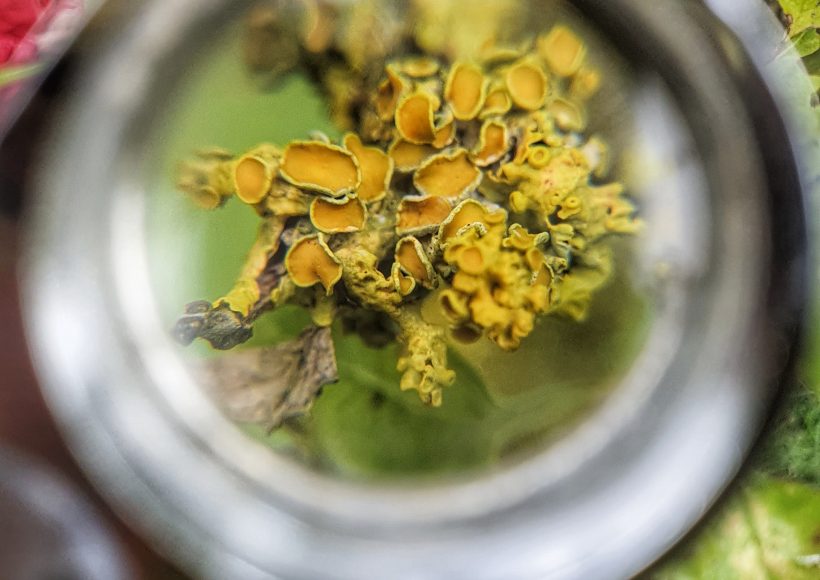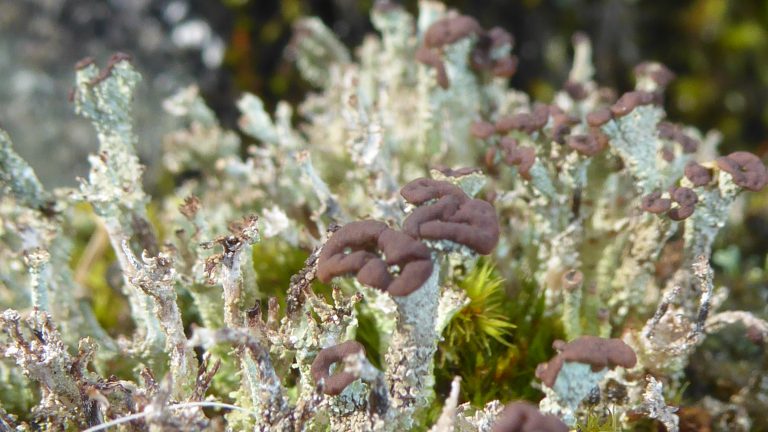Learn more about these tiny building blocks of life....
We walk past them all the time – and I bet most people don’t even notice. Yet they’re the very building blocks of life – some of the most amazing, and old, living things on our planet.
Lichens – I love them and I’m going to tell you why….and maybe persuade you to come on our new ‘Loving Lichens Workshop’*
Firstly – and this may seem either obvious or maybe obtuse – they’re everywhere – and they’re reliable. With just a little bit of knowledge I’ve always got a nice little nature fact with me on a walk – whether we’re walking up high, along the river or through a wood – even (especially) in an urban environment.
What is a lichen?
So what am I talking about? What is a lichen? (test; if you don’t know the answer to this – you should think about coming on a lichen workshop)… A lichen is a symbiotic or mutualistic relationship between a fungi and one or more photosynthesiser (usually, but not always, an algae, referred to as photobionts). And it’s often mutualism – i.e. both organisms benefit , but occasionally not equally- its not a parasitic or harmful relationship – though some lichens are parasitic on other lichens! The fungi (& 1 in 5 of all fungi’s will form lichens) provides the structure whilst the photobiont produces simple sugars as food, and usually grows far larger than it could without the fungi.

In this lichen partnership they form something truly new and unique – over 98% of all cup- forming fungi (ascomycetes) are lichens are but when the individual organisms are grown separately in a lab they don’t look anything like the lichens we see – together they are more.
But that doesn’t even begin to scratch the surface of how interesting these oft ignored little wonders are. Lichens can grow very nearly anywhere – many many places (& times) when other life simply can’t. They can grow on rocks, trees, animal bones, the ground – even metal. They thrive in remote areas like the Artic Tundra and the High Alps, but are equally at home in our towns and cities. They’re one of the starting agents for breaking down (over vast amounts of time) rocks to form soil. They can shut themselves down for years on end to survive climate changes. A selection of Lichen were exposed to the vacuum of space and the full force of the Sun’s radiation for a period of 15 days as passengers on a European Space Agency mission in 2009. Amazingly, some species continued to grow as normal upon their return. They are used by scientists to understand how glaciers move – they’ve been vital in our understanding of climate change. Lichens are recognised as being amongst the oldest living things on our planet. I could go on and on, but…

Workshop Content
Location will be specified in booking details below
Introduction and Objectives: We’ll start with some introductions and a quick knowledge check .
Habitats & types; The aim of this session is to give you the skills to identify some of our most recognisable lichens – but also to be able to explain the role they have in supporting ecosystems – as well as learning some fun facts.
Format; We’ll head out on a simple journey on lanes, tracks and rough ground and build up our knowledge and identification skills. The venues we visit across these workshops have all been carefully chosen to let us find a variety of both common and, wonderfully, rare lichen species.

What do you need to bring?
We’ll supply learning materials (some will be yours to keep).
You’ll need to bring:
Sturdy footwear – preferably boots if you’ve got them, some of the off-path areas we visit can be boggy and uneven.
Warm clothes – whilst we’re out for half a day we will be standing around a fair bit and you may get cold.
Waterproofs – its Cumbria – there’s always a chance of rain.
Lunch, snacks and a drink.
something to make notes with.
Enthusiasm!
Loving Lichens Workshops
This is a half-day workshop starting at 10am & is nominally 3-4 hours long – quite often that depends on the participants. It takes place outside and involves a couple of miles of walking on lanes, tracks and gentle off-path ground.
Book a Space
Informed Consent - we want you to know what risk is involved
While we take every precaution to ensure your safety on our walks (physically, psychologically and emotionally), all outdoor activities involve an inherent and unavoidable risk of an accident occurring that could lead to personal injury. All of our Walk Leaders are qualified in First Aid and carry emergency equipment to deal with emergencies. Walk Leaders are also trained to dynamically alter the route or plan for the day based on numerous potential factors - any decision to do so is fully authorised and expected by Wellness Walks. All participants should take an active role in minimising risks - so if you have a concern please speak up, if you feel unwell or unable to continue tell the leader.
Sorry, This walk is experiencing technical difficulties! Please check back later and if the problem persists contact our team.
Sharing is caring!
